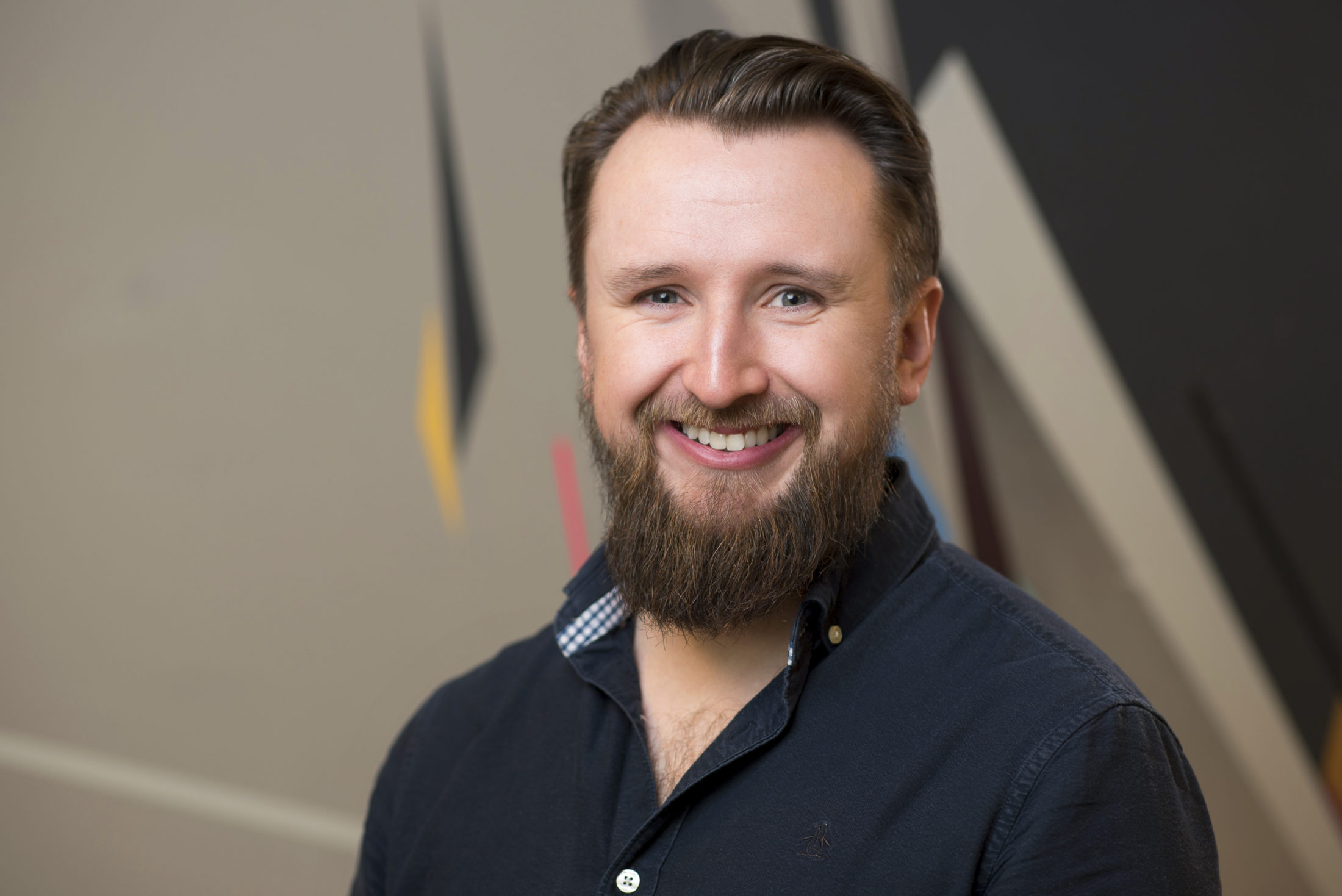Incumbent vs. Challenger: Don’t be Fooled by Fintech’s ‘Blur vs. Oasis’
This interview is part of prepaid cards for business provider Soldo’s Digital Disruptors series, which highlights the individuals changing the world with technology.
Interview with Nick Cullen
Exo Investing, an AI-powered investment manager, launched in May 2018 as the first product from Nucoro, a provider of “Wealth Management-as-a-Service” tools to both traditional and challenger financial services businesses. Nick Cullen is a seasoned marketer, business strategist and Nucoro’s Head of Partnerships.
Is the idea of incumbents against challenger fintech businesses passé? Don’t they actually want the same things: more customers, more digital services?
Not quite. What’s interesting to us is that incumbents and challengers are on parallel paths, but are just at very different distances down that path. They both need quite different things today to make an impact on their businesses.
Processes like automated onboarding and client reporting, for example, are things which fintechs can resolve themselves – they will figure out the right companies to plug into from the ecosystem. Where we can help is around investment management and execution with access to our APIs.
Conversely, traditional organisations have thousands of advisors and an investment committee. Therefore, they have less interest in our automated investment platform, but are hugely excited to escape the legacy IT of their existing onboarding and reporting systems. So fintech and traditional banks are competitors, but at very different stages of maturity when it comes to going digital. That means we’re very conscious that we’re building an ecosystem of services which may only be right for some parties in a couple of years’ time. For others, it’s exactly what they need today to accelerate growth and product offerings.
That’s not to say there’s no crossover in all of this though. The incumbents have obviously got some core legacy banking issues that they need to fix, but they don’t have to execute a wholesale change of the business, despite what some large brands are bravely trying to do. A smarter approach, at least to me, is to start to build separate digital offerings that are running off more flexible infrastructure.
Where traditional banks can particularly start to establish a beachhead with fintech services is in establishing new verticals. This is why Goldman Sachs has been so successful with Marcus [their new online bank and high interest savings account].
They have augmented their private bank with a retail unit which will attract a completely new demographic of customer. Better still, some of those customers, once they reach the right margins, will likely become Goldman Sachs customers thanks to an up-sell into the traditional high net-worth advisory model. In this way, fintech can open new low-cost verticals that feed the traditional business, rather than eating it.
So digitisation doesn’t have to mean the eradication of face-to-face business?
Absolutely not. Some of the greatest value we’re seeing for our platform is in hybrid models. We’re not saying that you should automate everything all the time like we did with Exo, and that AI will always win over a human. For the advisory model, by digitising lower-value business, you can free up skilled advisors to amplify what they do best for higher-value clients, while widening out the whole businesses client reach and business model.
There’s so much potential around the advice gap – mainly defined as anyone with under £250k. That’s astronomical for most, but it’s just not financially viable for most advisors to keep up with a high number of lower level clients. Yet if you build digital offerings for the huge number of people who have started to do some decent accumulation – say anyone with £10k to £250k – then you can intervene where you want to put advice into that model and begin to nurture some of them into becoming fully paid advice clients rather than having to turn them away and hoping that they come back to you once they have more money.
That also applies to the generational transfer. The next two generations are going to inherit more money than any previous generations – trillions more. They will suddenly find themselves with money. Yet under the current advisory system, they have no idea where to go, because they have never been engaged with, and in its current format likely don’t want to.
“There are too many times in our lives when we all know that robo-investing deserves to be augmented with a real advisor. Yet again, we have to stop seeing digital and traditional as separate and divisible services; the customer context means all options are on the table.”
It’s great that you see the generational gap in a slightly more nuanced way than “old people do offline, and young people go online” – you see change and grey areas throughout. So what do customers want today? It seems that they are becoming more multi provider, taking a few risks on fintechs because it’s worth the risk as a learning process.
I’m the worst example of this! Look at my wallet – I’ve got every challenger bank’s card and I sign up to most new services to try them out! Yes, plenty of people are taking a punt on fintech. But the reverse is also happening.
Fintech was born out of the unbundling of financial services in 2009-10 into all these new unique and specific propositions, many of which have gone on to do fantastically well. But with so many options, we’re now starting to see opportunities to bundle financial services back up, and there is definitely a race to be the central consumer hub.
I say ‘hub’ because we’re at a point in time when I think ‘banking’ needs redefining, and we’re becoming more engaged with different money apps than we are with a traditional ‘bank’. The view of what’s regulated as a true bank and what people are using to manage their money and considering as their bank is becoming increasingly blurred.
Yolt, for example, is doing a great job of trying to become the hub. Instead of the old ‘marketplace’ approach of listing out providers and then sending customers off to those providers, we’ll see individual apps like Yolt – or indeed folks like Apple – begin to own the customer experience end-to-end.
You mentioned triage earlier: we want advisors to work on the higher-value elements of their offering while leaving lower-value service to digital; but today customers want triage as well. They want low-touch, zero-contact online service for simple queries, but they also want their advisor on tap when they come up against something they don’t know about…
Yes – outside of it being a new revenue stream, this is why robo-advisors like Wealthsimple and Nutmeg have added a mid-cost advice element to get access to an advisor on top of their digital platforms.
But there’s no reason that traditional advisors can’t use that model as well: a flat-fee initial fact-find and deep-dive to make sure that the client is set up tax efficiently and that their major life decisions are being handled intelligently, after which the service is digital-first.
There’s no reason that traditional advisors can’t begin to leverage the Nutmeg/Wealthsimple model as much as they’ve both started to offer the advice model. There are too many times in our lives when we all know that robo-investing deserves to be augmented with a real advisor. Yet again, we have to stop seeing digital and traditional as separate and divisible services; the customer context means all options are on the table.
Let’s turn to Exo Investing. AI is going to revolutionise robo-advisory, but aren’t we stuck with algorithms again? Won’t algorithmic investment just amplify my own mistakes?
Exo uses AI and Machine Learning to work much more efficiently than the usual approach of having an investment committee changing allocations quarterly. Traditional robo-advisors run off model portfolios, so you will be treated as an average of what could be thousands of people, even though our individual propensity to risk, or current sentiment, might be very different.
Exo builds individuality into everything. With Exo, risk is granular right down to the point of the individual, and it’s assessed against the market every day, not quarterly. So the AI adjusts portfolios daily for an intensely personalised understanding of appetite for risk. The response is similarly balanced and gentle: in the stockmarket wobble last December, you could watch our portfolios gradually uprate into bonds as the markets changed; and in January as the market recovered, more aggressive portfolios would transfer back into stocks. It was slow and measured, rather than a quarterly jump on the next rebalance date. From a risk management perspective no human can keep up with that.
On the point about it amplifying your own mistakes, it’s actually quite the opposite. Just because you say you have a preference for say Emerging Markets, China, Technology and Private Equity doesn’t mean they’ll always be held in your portfolio. When optimal, Exo will naturally upweight you into your preferences, but if it’s really not a good time to be exposed to those assets, then quite simply you won’t be. And that analysis is happening constantly for you.
Are you using predictive analytics, macro-economic information, for example?
Yes, absolutely; but it’s more the ability to make an instantaneous reaction to quantitative data that happens along the way, rather than say just waking up one morning to the latest Trump tweet and deciding that we need to get out of Emerging Markets! Our approach is never wholesale change, more so constant analysis and incremental changes as necessary. On top of that, we test every portfolio against both real and thousands of randomised synthetic market scenarios to ensure it’s robust.
For every single decision that Exo makes – and that could be keeping your overall asset allocation the same but changing the individual weightings by just points of a percentage – even to do something as small as that, our approach looks at millions of data points. That happens constantly, for every single portfolio, until the market opens, at which point we’ll trade to rebalance. No human can do that at scale.
Let’s look at an 18 month timeline: what gets you excited at the moment?
I live in this fantastic world of getting people to rethink what’s possible when it comes to financial services, and backing it up with the tech to do it. What we can build together that is so much greater than what most people think of for their Minimum Viable Product.
Overall, I get excited about thinking of the new services we can offer and new automations we can create that align with people’s real lives.
As for more specific examples, a great one – for extending services to previously underserved communities as we discussed earlier – is SME banking for freelancers. We’re now starting to see better bank accounts, invoicing and tax planning services – there’s clearly plenty of competition coming there.
But for a freelancer, there’s a blurred line between business and personal money. We’re now getting services that can help a freelancer manage their income, but I’d love to see someone tackle that blurred line and help freelancers with saving, investing and pensions. Really help extend their business banking into their personal lives, even though their income is variable – because that’s exactly how they live.
I also think there’s a huge opportunity in bringing digital services to private banking and HNW clients. I know that’s very different to the example above, but it’s a huge market with incredible potential for disruption. You’ll need to invite me over for a coffee to pick my brains on that one though.
The fintech sector remains hot because digital is powering continued innovation, with AI being just one of these new engines of evolution in financial services. But the idea that incumbents are being backed into a corner by the newcomers is naïve. Rather, the rational business model for traditional players is different to the challengers.
Similarly, with so many untapped markets and products, there is plenty of room to establish new customer relationships. But most importantly of all, the distinction between challenger and incumbent is weakest because we often fail to think through the customer’s eyes: the modern customer needs human interaction in plenty of contexts. We want everything that digital has to offer; yet professional assistance is on the way to becoming more visible and available than ever.








